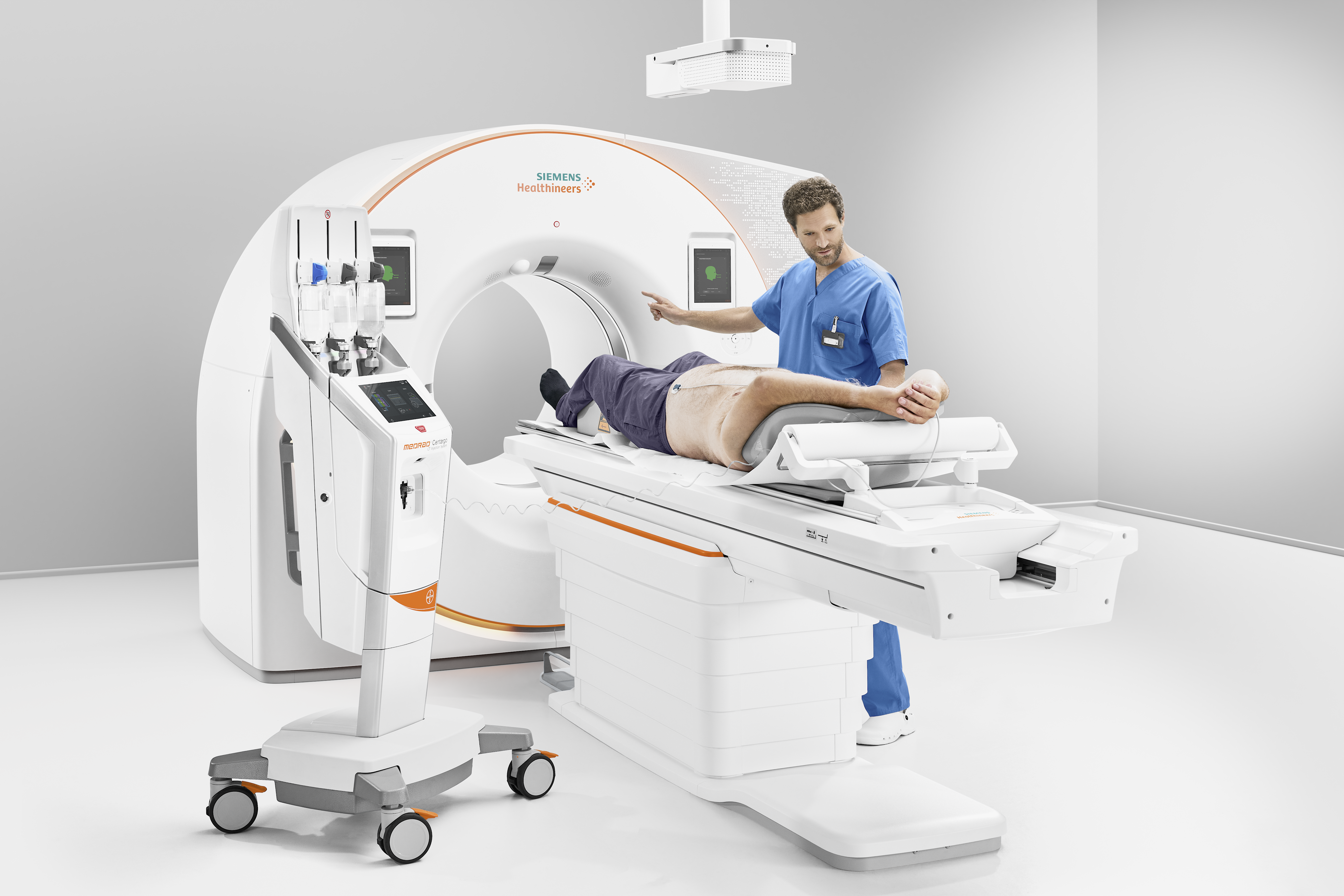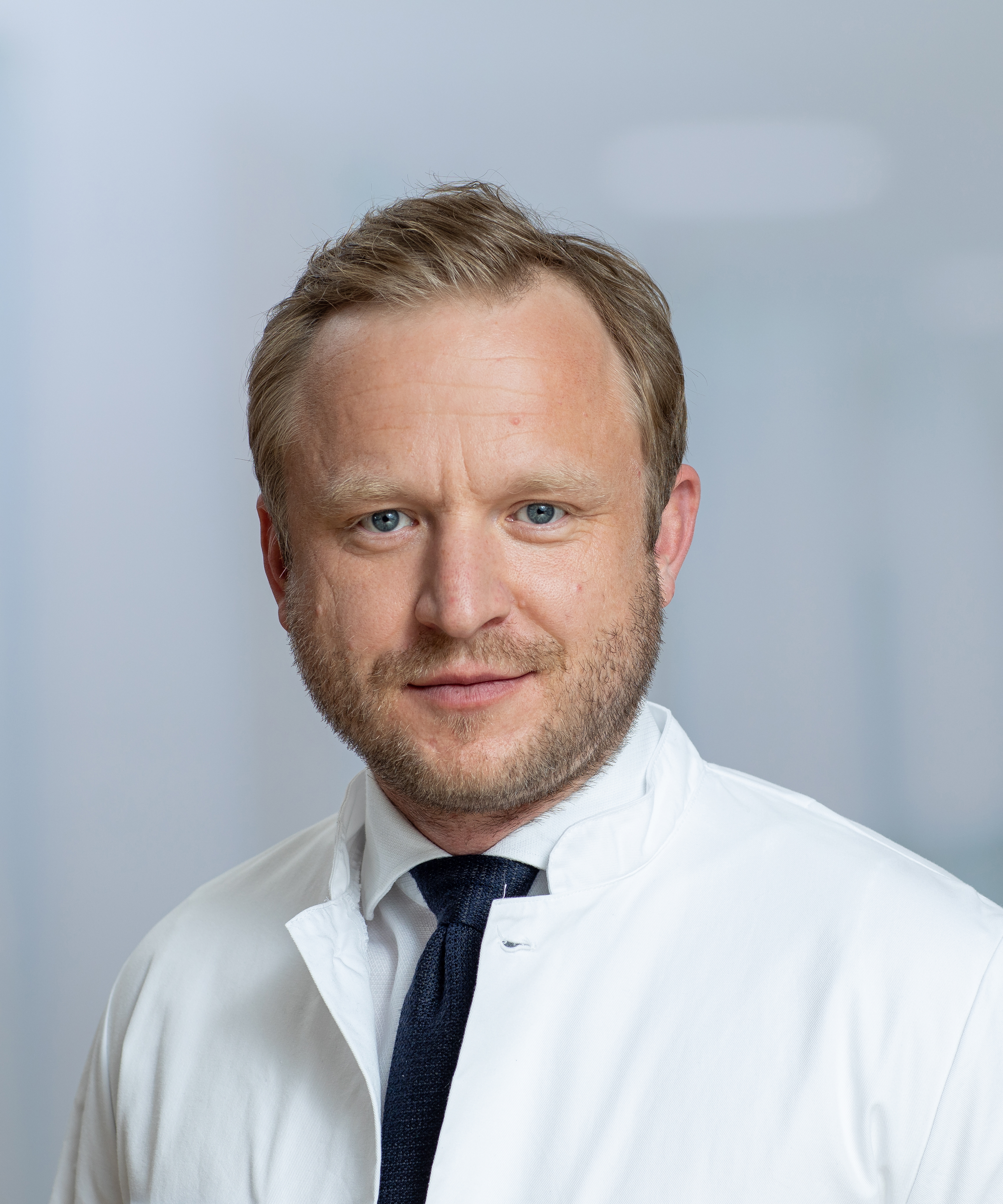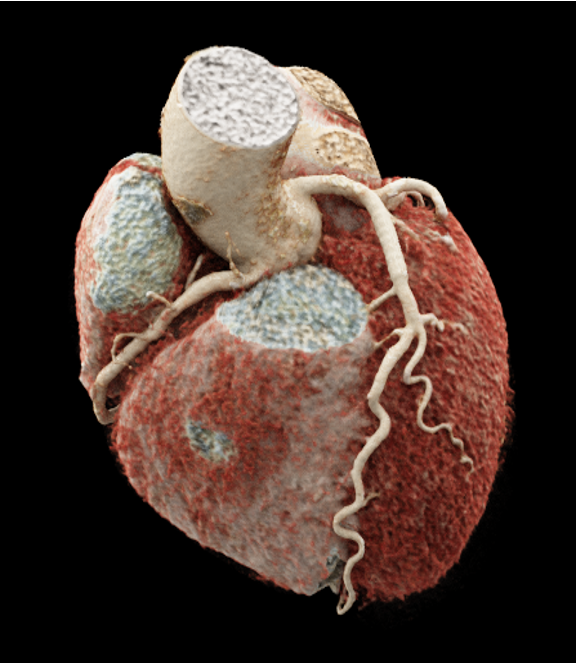Photon-counting technology
PC3 consortium: innovative computed tomography for Baden-Württemberg
The University Hospitals of Freiburg, Tübingen and Mannheim have been cooperating with each other since 2021 to test new types of computed tomography devices. With the help of photon-counting technology, the aim is not only to improve patient care, but also to encourage local companies to develop downstream data processing technologies.
Imaging techniques are indispensable for examining internal body structures. Conventional X-ray images provide a two-dimensional representation that superimposes areas lying one behind one another. They are primarily used for the initial diagnosis of bone fractures, pneumonia or functional disorders of the gastrointestinal tract.
Another X-ray based imaging procedure known as computed tomography (CT) has been in use since the 1970s. Here, the radiation source rotates around the person being examined and irradiates the person in ‘slices’ and from different angles. This produces many cross-sectional images, which can then be combined with the aid of computer calculations to produce a more detailed, three-dimensional image on which the tissues can be seen without superimposition. In combination with the administration of contrast agents, it is also possible to better distinguish between tissues with similar X-ray densities and to highlight blood vessels. Since CT scans take just seconds, they have become an indispensable part of clinical care, including in emergency situations.
Photon-counting detector technology
 Examination with a photon-counting CT scanner. © Siemens Healthcare GmbH
Examination with a photon-counting CT scanner. © Siemens Healthcare GmbH"A great deal can be detected with state-of-the-art CT diagnostics, but the method still comes with a few limitations," says Prof. Dr. Fabian Bamberg, Medical Director at the Department of Diagnostic and Interventional Radiology at the Freiburg University Medical Centre. "The resolution of tissue alterations still needs to be improved: the more discrete the detectable changes are, the more accurate the diagnosis is, leading to better subsequent therapy. In addition, patients who undergo CT examinations are still exposed to radiation, albeit very low levels, and we want to reduce this further.
We now have the opportunity to work with our long-standing innovation partner Siemens Healthineers to develop and use CT scanners with a novel detector technology that represents a real technological leap forward." X-rays are electromagnetic waves that are absorbed in varying degrees by different structures as they pass through the body. Dense tissues, bones for example, absorb a lot of radiation, so that only weak signals reach the X-ray film or detector located behind the person undergoing examination. The corresponding areas in the image remain bright. Cavities, however, which transmit a lot of radiation, appear dark. In currently used CT scanners, the electromagnetic light particles (photons) are detected via a two-step process: first, incoming X-rays are converted into visible light with the help of scintillation crystals. This generates an electrical signal at a downstream photodiode, which is then digitized.
 Radiologist Prof. Dr. Fabian Bamberg from the Freiburg University Medical Centre leads the Photon-Counting CT Consortium (PC3). © Freiburg University Medical Centre
Radiologist Prof. Dr. Fabian Bamberg from the Freiburg University Medical Centre leads the Photon-Counting CT Consortium (PC3). © Freiburg University Medical CentreThe innovative photon-counting (PC) detector is based on a cadmium telluride semiconductor, and converts the incoming X-ray photons directly into an electrical signal. Since less background noise occurs with this technology and smaller detector pixels are possible, it produces much sharper and more detailed images. "We can now see even subtle changes much better, for example in the lungs of COVID patients," the radiologist reports enthusiastically. Bamberg and his partners founded the PC3 consortium in April 2021 and have since been testing the innovative CT devices. Together with its partners Siemens Healthineers and BIOPRO Baden-Württemberg GmbH, the consortium is working on establishing next-generation computed tomography in Baden-Württemberg. The cooperative project has been funded by the Baden-Württemberg Ministry of Economics, Labour and Tourism. The project coordinator explains: "The collaboration between different university hospitals is very effective and goal-oriented. All three hospitals focus on different patient collectives: Freiburg focuses on cardiovascular diseases, Tübingen uses the device in oncology, and in Mannheim it is primarily used to examine children. We can exchange information and knowledge and support each other through a newly established platform."
Huge digital potential
 Three-dimensional representation of a heart using photon-counting CT technology. © Freiburg University Medical Centre
Three-dimensional representation of a heart using photon-counting CT technology. © Freiburg University Medical CentrePhoton counting, i.e. the direct counting of each individual photon, generates a very high information density. "Besides adapting and optimizing protocols, the real challenge for us was dealing with the digital data volumes," says Bamberg, outlining the initial problems. "We didn't expect such complexity, so we had to significantly scale up the surrounding structures such as servers and computers." New software products are also needed to be able to use and evaluate the data optimally. The PC3 consortium also has these economic aspects in mind and is actively promoting the development of companion technologies in Baden-Württemberg. Data processing using artificial intelligence is expected to enable more accurate diagnoses and improve medical processes. It also makes three-dimensional planning of operations conceivable. "We have created a small digital cosmos around photon-counting CT technology that has great potential." Bamberg is therefore hoping for follow-up funding for the project, after initial funding ended in late 2022. The consortium is already working with a number of local companies, and these collaborations will be continued in 2023.
The photon-counting technology also opens up numerous possibilities for developing new contrast agents. Concrete projects in this field are already being planned with a well-known pharmaceutical company.
Many advantages for patients
The new PC-CT technology not only delivers high-resolution images, but also requires fundamentally fewer photons, so that the radiation dose during examinations can be reduced. "This is another big advantage. We are slowly moving more and more into the MRI field," says the radiologist. Magnetic resonance imaging uses strong magnetic fields instead of X-rays and is particularly good at representing and differentiating soft tissues that contain water. However, an MRI scan takes 10-50 minutes, and is therefore poorly suited in emergency situations and for restless individuals and young children. The photon-counting devices therefore represent a possible alternative.
Due to the high density of digital information, the new generation of computed tomography scanners potentially not only enables more accurate diagnoses, but can also create a basis for novel therapy concepts and thus contribute to better patient care in the future.